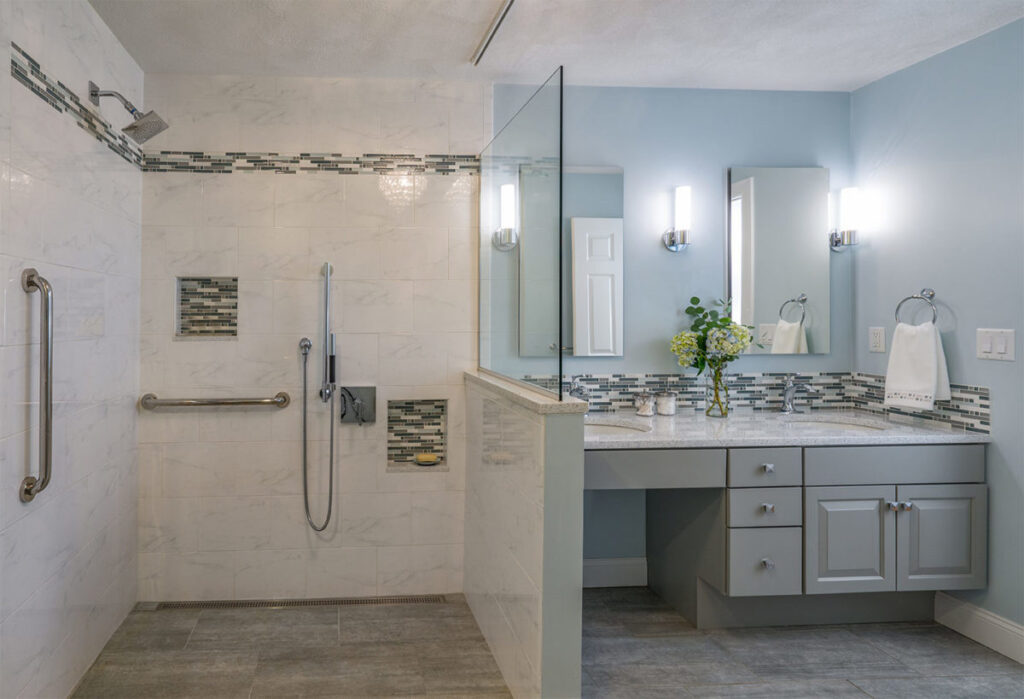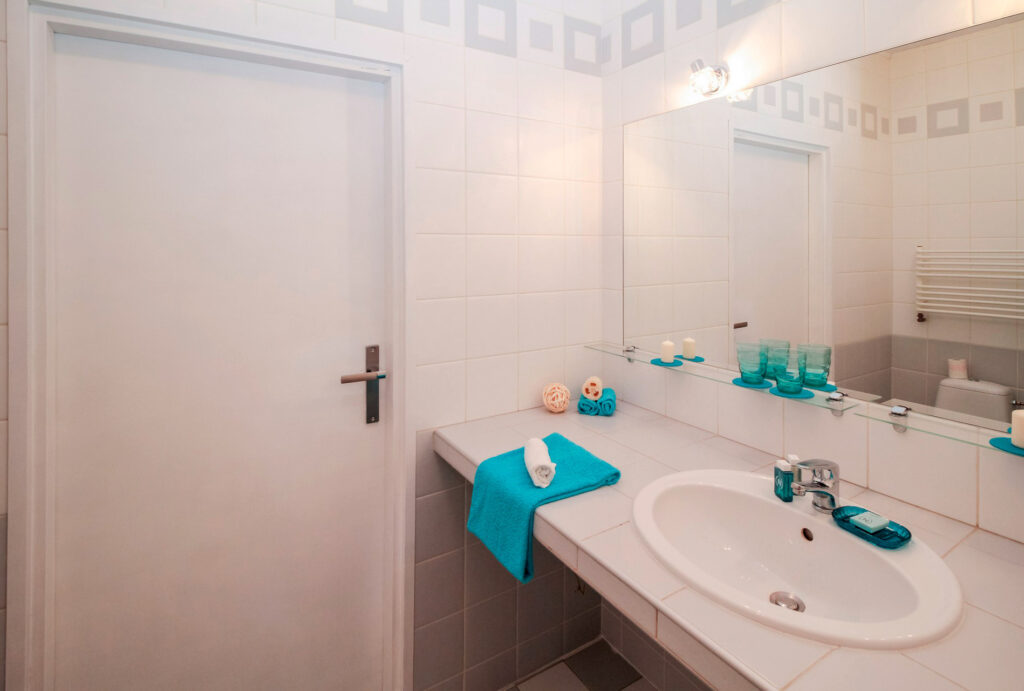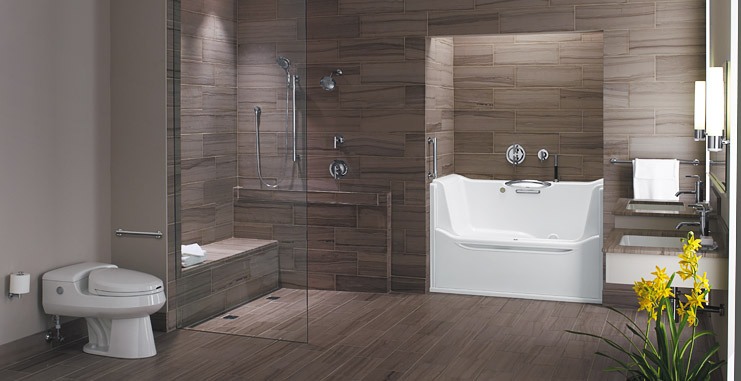As Certified Aging in Place Specialists, Clason Remodeling has been trained not only in the unique requirements of preparing a home for an aging population, but also how to design a home with accessible features without looking institutional. Working with a CAPS-certified remodeler helps you redesign your home for utility and aesthetics.
Millions of Americans have mobility issues. An aging population means those numbers are only going to go up. Even if it’s not something you’re worried about today, it may become an issue in the future for you or visitors to your home.
A well-designed accessible bathroom needs to address several areas. All of these updates can be made in a bathroom of any style from traditional to contemporary. Aging in Place remodeling is about making changes to help prepare your home for the future and today.
Doorway
First of all, you need to be sure there’s enough clearance to get into the bathroom. A 36-inch or wider opening is best, but a 32-inch wide entry should provide the necessary space for a wheelchair or walker.
Doors should be fitted with lever-style handles versus doorknobs for ease of gripping and opening. Pocket doors can be a great solution as they don’t require room to swing open and closed, making for easier maneuverability.
If at all possible, level out the floor between the bathroom and hallway with no raised thresholds for the transition between the spaces.

Flooring & Layout
Floors should be made out of a slip-resistant material (a good call for any bathroom!), such as vinyl or non-slip tiles.
A wheelchair needs a minimum radius of 48 inches to turn around, and the Americans with Disabilities Act recommends a 5-foot turning radius in the bathroom.
Toilet
The toilet needs to be raised to chair height, approximately 18 inches off the ground. Grab bars should be installed as well to help users get on and off the toilet. The grab bar should be placed within easy reach of the toilet and should be at least 36 inches long. The great thing is that grab bars no longer need to look “institutional.” There are plenty of great decorative options available.
Whatever you choose, be sure they are a diameter of only 1 to 1 ½ inches for easy gripping. The wall where the grab bar is mounted needs to be reinforced as well to handle the extra weight. Important: A towel rod is not a grab bar and shouldn’t be used as one!
Sink
The sink should be mounted on the wall, with no cabinet underneath, to allow clearance for a wheelchair. A height of 30 to 34 inches is ideal. A single-lever faucet allows for an easier grip. As touchless fixtures come down in price, those make a great option.

Shower
Replacing your tub with a curbless shower makes the bathroom more usable. Most showers, even those without tubs, require you to step up-and-in to the shower. A curbless shower eliminates that transition, putting the shower entrance flush with the floor of the bathroom. A fixed or rolling shower seat, at a height of 17 to 19 inches, will allow a bather to sit while showering.
If keeping a tub is important, consider a walk-in tub that gives the benefits of a traditional bathtub without the need to step over a high surround. Grab bars need to be installed in the shower/tub as well. As with the toilet grab bar, the walls should be reinforced behind the bars. Grab bars should be mounted along the side wall, near the entrance to the shower, near the controls and anywhere else your layout necessitates. Your remodeler can help you make the right call.
Time to work on upgrading your bathroom? Clason Remodeling is ready to help you update your home so you can live in it for years to come. Contact us today to discuss your remodeling needs!

